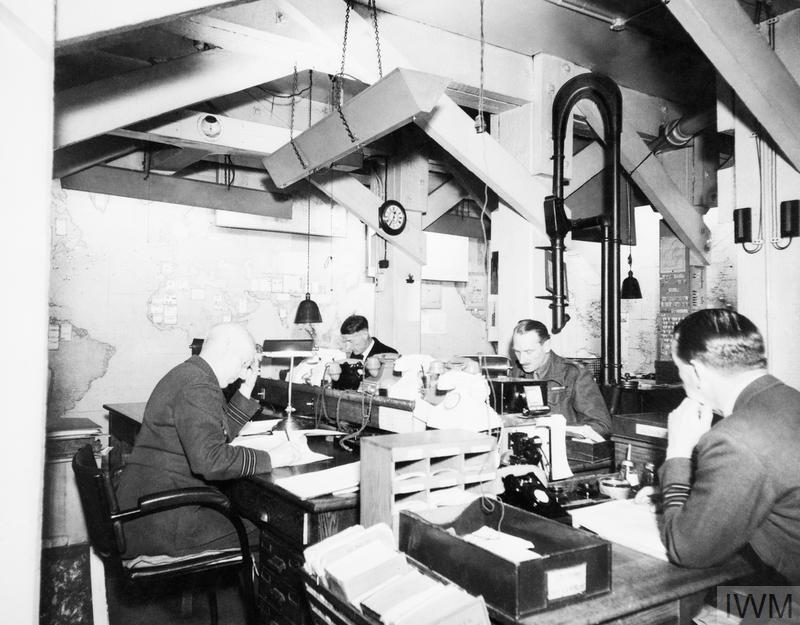During the Second World War, a group of basement offices in Whitehall served as the centre of Britain’s war effort. The complex, known as the Cabinet War Rooms, was occupied by leading government ministers, military strategists and Prime Minister Winston Churchill.
Following the devastation of the First World War, military planners feared up to 200,000 casualties from bombing in the first week of a future war.
Plans to evacuate the prime minister, cabinet and essential staff from London were drawn up as early as the 1920s, but concern that Londoners would feel abandoned if the prime minister and government were in a safe place, and issues about the speed of evacuation, led to a search for an emergency shelter in central London.
In June 1938 the New Public Offices building was selected. It was near Parliament, with a strong steel frame and a large basement.
The Cabinet War Rooms
These boards gave news of the weather to those working underground. During air raids as the indicator was changed to 'windy' as a joke. Despite a reinforced concrete slab up to three metres thick installed above the rooms in December 1940, a hit from anything larger than a 500-pound (227-kg) bomb could have penetrated the building and destroyed the War Rooms. Secrecy was the best security for the site.
The basement was adapted to provide meeting places for the War Cabinet during air raids and also housed a military information centre based around a ‘Map Room'. Here, vital information for King George VI, Prime Minister Churchill and the armed forces was collected.
The Cabinet War Rooms became fully operational on 27 August 1939, a week before Britain declared war on Germany.
Churchill’s War Cabinet met here 115 times, most often during the Blitz and the later German V-weapon offensive.
The Cabinet War Rooms were in use 24 hours a day until 16 August 1945, when the lights were turned off in the Map Room for the first time in six years.
In 1984, IWM opened the rooms to the public for the first time and they can be visited today.
In 2005 HM the Queen opened the Churchill Museum, which examines the life and work of Winston Churchill.





